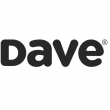Haynes leads new venture to tackle European equities
Following a period of equity market consolidation, the time is right for a new entrant to step forward and transform the exchange business, according to Alasdair Haynes, chief executive of startup trading venue Aquis Exchange.
“There is a need for more competition,” Haynes told Banking Technology. “The exchange business is currently a duopoly. The market needs a terrier to help break down the barriers, to bring positive disruption and innovation – and we are happy to be that terrier.”
Before starting Aquis, as chief executive Haynes was instrumental in the success of pan-European trading venue Chi-X Europe, which achieved a pan-European market share of approximately 30% within less than five years, according to figures provided by Thomson Reuters. Prior to that, he spent ten years as chief executive at agency broker ITG Europe, where he was involved in setting up ITG’s Posit dark pool. In his previous positions, Haynes has consistently argued for greater competition, including an end to the residual monopoly national exchanges still retain over opening and closing auctions and market data.
“Where competition exists, prices come down,” he said. “Where you have monopolies, prices have risen substantially. A lot of people are talking about how to save costs, but few are looking at how we can make the industry grow. We have a lot of innovative ideas on how to make that happen.”
Aquis Exchange will depart from the usual exchange practice of charging participants a percentage of the value of each stock they trade. Instead, it will charge users for the message traffic they generate, in a similar manner to a telecoms firm. There will be a low usage band for small firms, an upper band for the largest users, and an exemption from charges for market makers when posting liquidity.
“Why pay more for trading GlaxoSmithKline than trading Vodafone?” said Haynes. “We are essentially managing message traffic – that is the job of an exchange. If this model works in equities, we can help bring business back on exchange, which is one of the objectives favoured by regulators.”
One of the core concepts behind Aquis is the idea that there is a need to create a good ‘ecology’ between different kinds of market participants. To do that, Aquis abandons the maker-taker model used by venues including Chi-X and many others in recent years. Maker-taker pricing has traditionally been associated with high-frequency market making firms, which have boosted exchange volumes but also drawn fire from long-term institutional investors, who distrust HFT. Many asset managers have come to favour dark pools instead of the lit markets, increasing market fragmentation and reducing transparency.
“The only way back to growth is to get everybody in,” said Haynes. “You need all types of flow mixing together. The problem with benefiting the maker is that the takers go elsewhere. On Aquis, everybody is on a level playing field.”
The technology behind Aquis will be low-latency, with facilities for colocation and full interoperable clearing arrangements from launch. The exchange also intends to make technology a business line; Haynes confirmed that the firm has already sold its technology to another organisation, which is currently exploring opportunities in Africa. Aquis will start out focusing exclusively on equities, but Haynes made it clear that if the model is successful, the exchange will expand into other classes and become “agnostic to asset class”.
Earlier this month, Banking Technology spoke to Christopher Gregory, co-founder and chief executive at Squawker, another new trading venue that is also planning to launch across Europe with a new business model. Squawker and Aquis Exchange differ in the sense that Squawker will offer a sell-side to sell-side negotiation service aimed at helping brokers to trade in blocks, whereas Aquis will be an exchange focused on creating a mixture of many different kinds of participant, including retail brokers, major sell-side firms and institutional investors.
Aquis Exchange has submitted its business application to the UK Financial Services Agency, and is hoping to go live in Q3 this year.











































